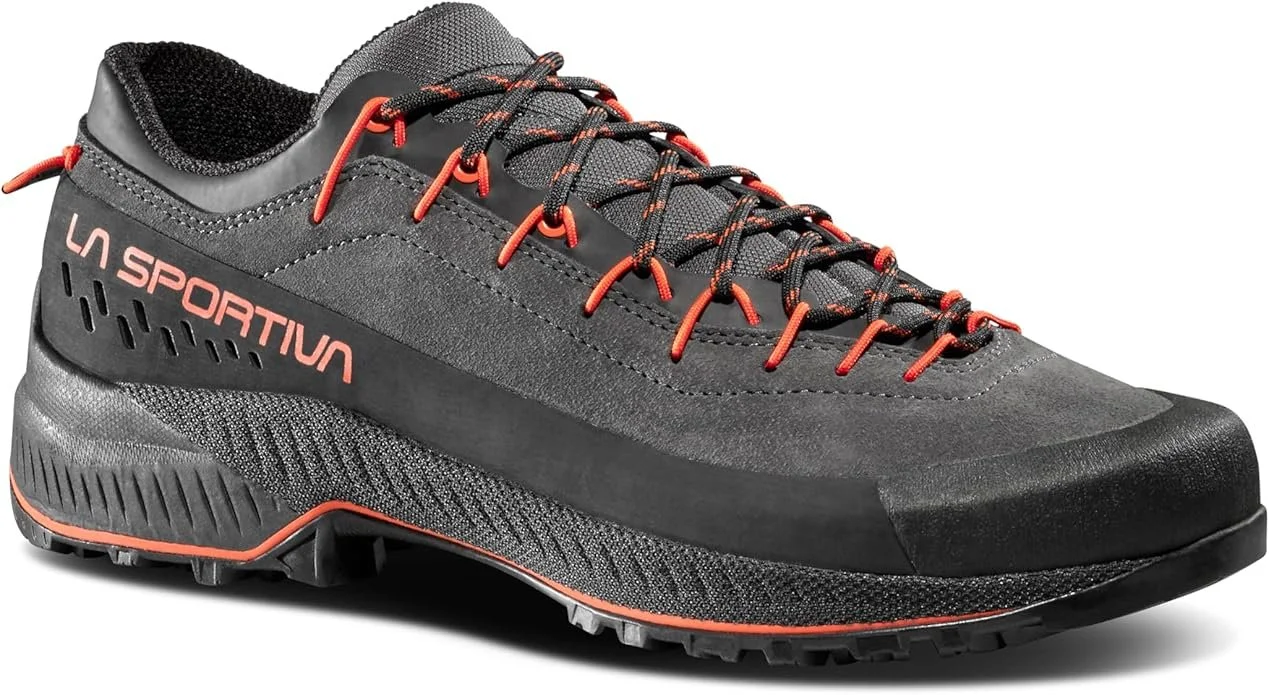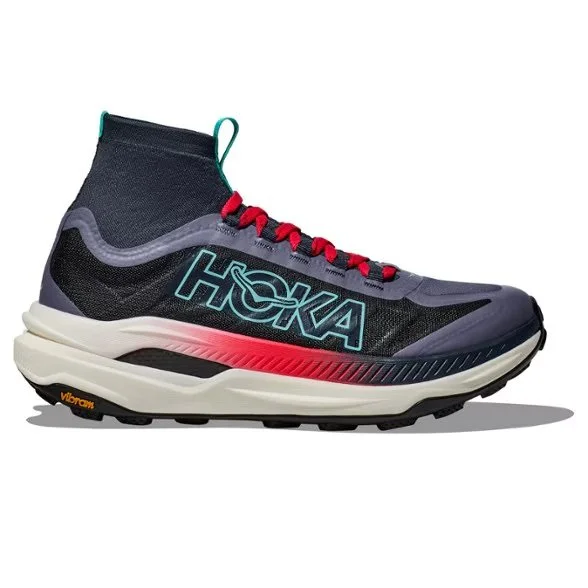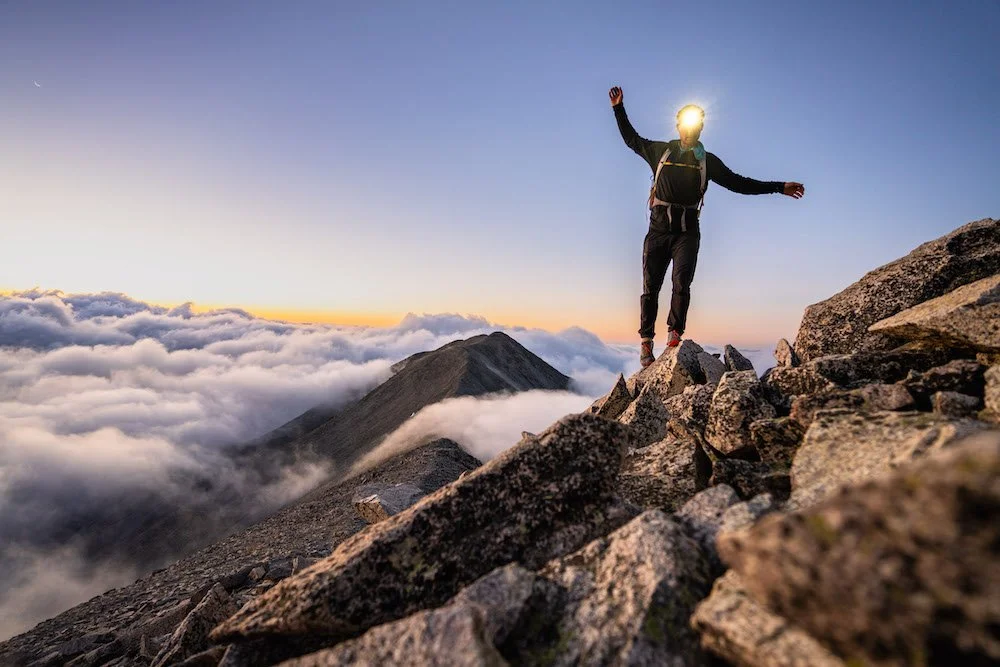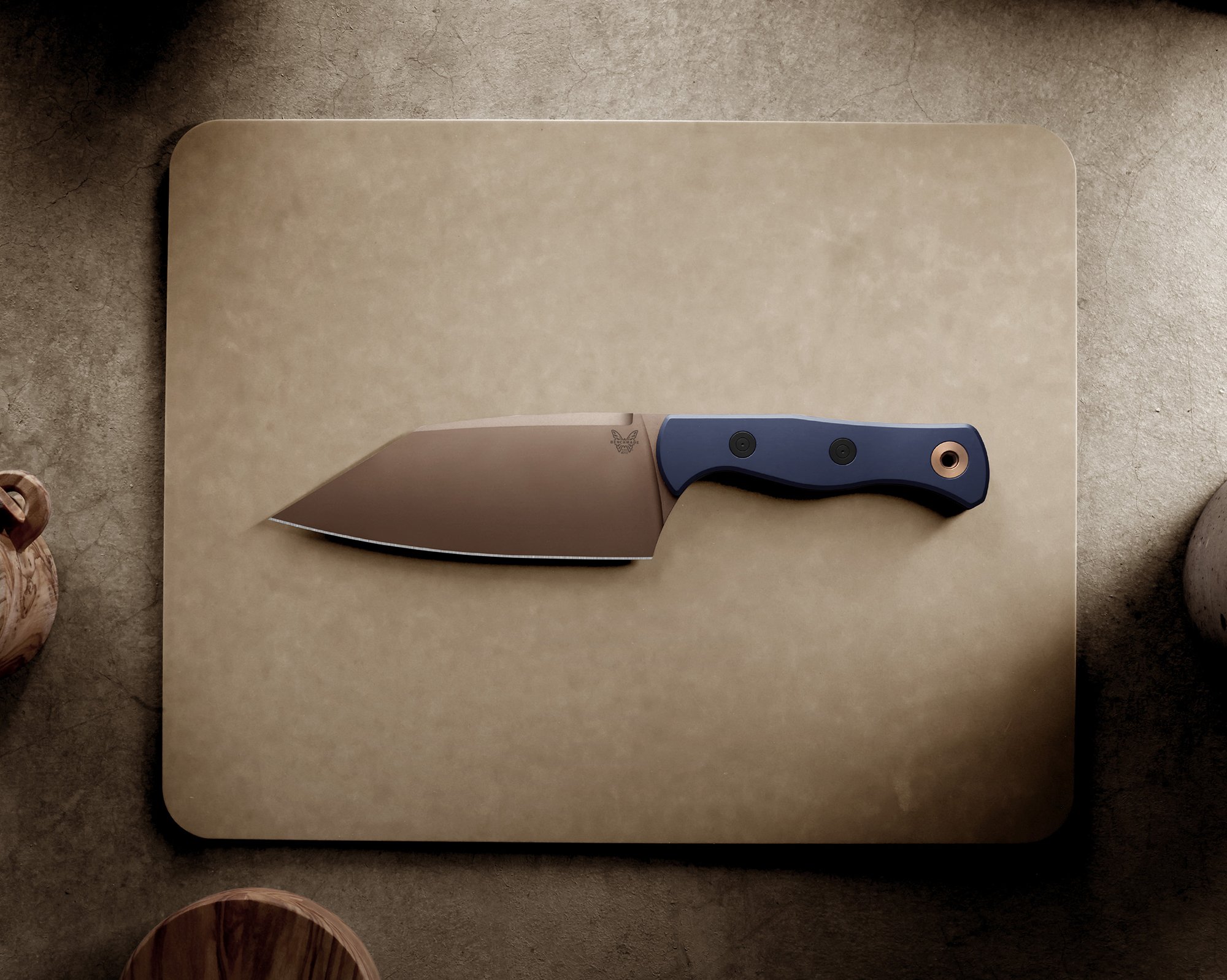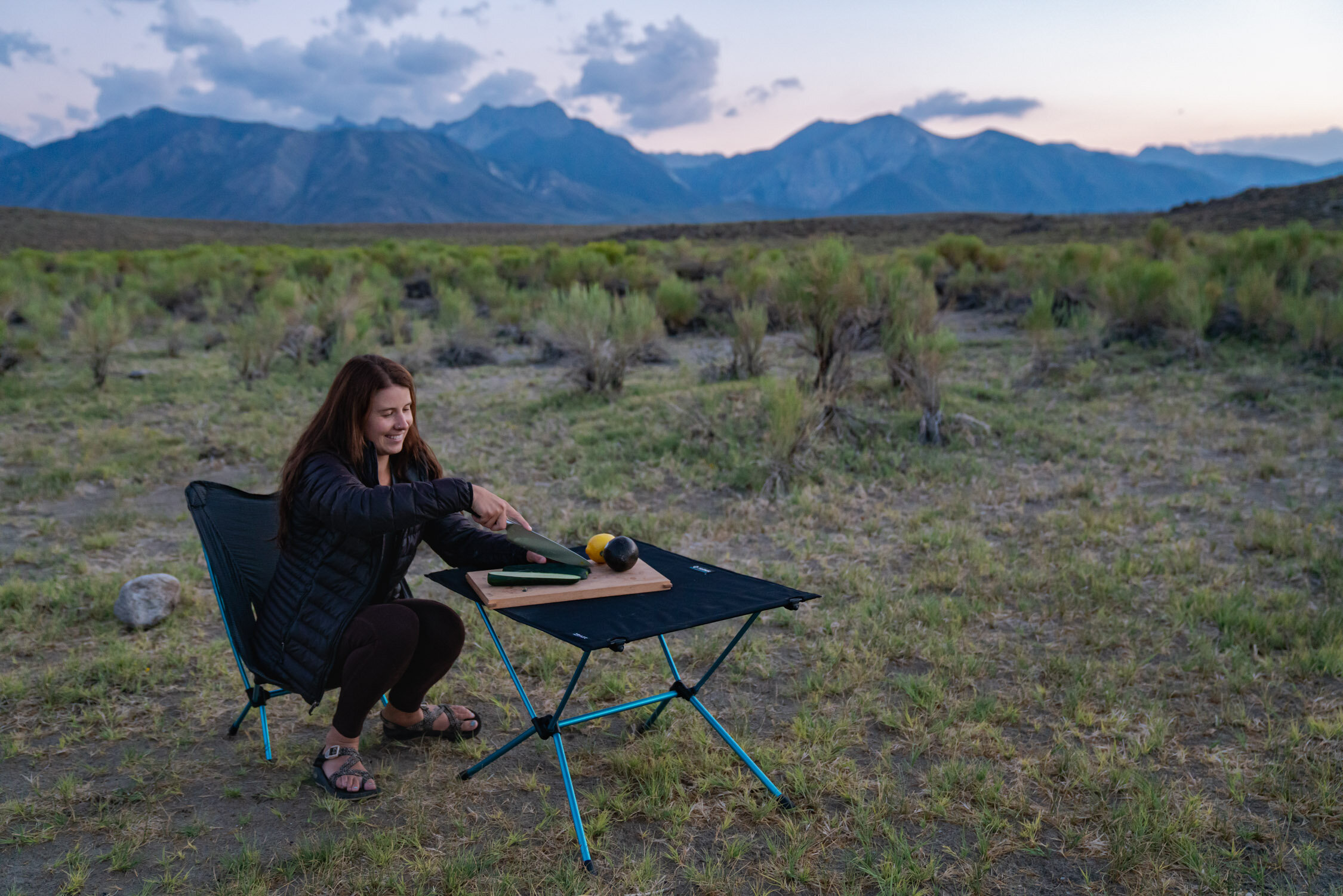When preparing to climb a 14er, you might assume that mountaineering boots are a must. I did too—at first. For my first few fourteeners, I strapped on heavy, clunky mountaineering boots because that’s what I thought the terrain demanded. But as I gained experience, I realized that boots are often overkill for most 14er climbs. In fact, approach shoes or trail running shoes are usually better options. These lighter alternatives offer comfort, flexibility, and the ability to move quickly—qualities that are often more important than the rigid support of traditional boots.
Jumping with joy after completing all 15 of the Sawatch 14ers in 20 days. Photo by Dalton Johnson
Do I Need Specialized Footwear for Climbing 14ers?
The short answer is no—you don’t need specialized mountaineering boots for most 14ers. While boots offer great support, they’re heavier, less flexible, and unnecessary for the majority of non-technical routes. For most 14ers, the ideal footwear includes approach shoes or trail running shoes, especially if you value lightweight performance and comfort.
Why I Prefer Approach Shoes or Trail Runners
Approach shoes and trail runners are lighter, more comfortable, and better suited for quick movements on rocky terrain. Personally, I prefer high-top versions to protect my ankles. With these options, you can maintain agility while still getting enough support for uneven trails. Trail runners, in particular, are fantastic for their breathability and cushioning—qualities that make long, grueling days much more manageable.
Choosing the right footwear can also help reduce fatigue. When you’re covering thousands of feet in elevation gain, every ounce on your feet feels like pounds on your back. Lightweight shoes let you focus on enjoying the climb rather than worrying about sore feet.
La Sportiva
My Favorite Approach Shoes
La Sportiva TX4 (Favorite): These are hands down the best all-around approach shoes for the mountains. The grip is fantastic, and they work incredibly well for moving quickly over mixed terrain. They’re my go-to for 3rd and 4th class scrambles, offering just the right blend of support and flexibility.
Arc'teryx Konseal FL GTX (Second Favorite): These are solid all-around approach-style hiking shoes. The sticky rubber could be better, but they perform great on 3rd and 4th class terrain. I wouldn’t recommend free-soloing anything over 5.5 in them, though. The waterproof design makes them a good choice for wetter conditions.
Black Diamond Mission LT (Good Enough): They get the job done but don’t stand out. I find them difficult to run or jog in due to their stiffness. However, they’re durable and reliable, making them a decent budget-friendly option.
Hoka
My Favorite Trail Runners
Hoka Tecton X3 (Favorite): The extra padding is a lifesaver for long days, and the traction is excellent. Plus, the built-in gaiter keeps rocks and sand out of your shoes. However, the rubber isn’t sticky, so they’re not great for scrambling on rocks. I’ve used these for multiple 14ers and appreciated how they absorbed the impact on long descents.
Merrell Agility Peak (Second Favorite): A great all-around shoe. The only downside is the slightly taller design, which can make balancing tricky on uneven ground. These are excellent for trails with lots of loose dirt or gravel.
Nike ACG Mountain Fly (Good Enough): These shoes have aggressive tread and get the job done, but they feel heavy compared to other options. They’re a reasonable choice for someone transitioning from boots to trail runners.
Running down from the summit of a Colorado 14er. Photo by Dalton Johnson
Tips for Choosing the Right Footwear
When picking between approach shoes and trail runners, consider the specific terrain and conditions of your planned climb. For routes with more technical scrambling, approach shoes with sticky rubber soles will give you the confidence to tackle rockier sections. For long, straightforward trails, trail runners are the better option for their cushioning and breathability.
Another factor is fit. Always try your shoes with the socks you plan to wear on your climb. A snug but not tight fit will minimize blisters and hotspots, which can derail an otherwise great day in the mountains.
A Few Exceptions
While approach shoes and trail runners are sufficient for most 14ers, there are exceptions where boots are necessary:
Glaciated Peaks: For climbs like Mount Shasta or Mount Rainier, mountaineering boots are essential. These peaks often require crampons, and boots provide the rigidity needed to handle glacier travel. That said, I’ve seen an ultra-fit runner tackling Mount Shasta near the Thumb in trail runners, spandex, and a wind jacket—but that’s an exception, not the rule.
Winter Ascents: If you’re climbing a 14er in winter conditions, mountaineering boots are the safer choice due to the added insulation and compatibility with crampons. Winter routes often demand more protection from the elements, and boots excel at keeping your feet warm and dry.
Extended Expeditions: If you’re doing a multi-day climb or carrying a heavy pack, the extra support from boots can be beneficial. This is especially true for routes with significant snow or scree fields, where stability is paramount.
Sunrise summit mission on a Colorado 14er. Photo by Dalton Johnson
Final Thoughts
When it comes to climbing 14ers, boots aren’t the be-all, end-all of footwear. For most climbs, you’ll find that approach shoes or trail runners are more than sufficient. They’re lighter, more flexible, and allow you to move more efficiently on the trail. Consider the terrain and season when making your choice, but don’t feel like you need to default to heavy boots. Save those for the snow and ice!
Ultimately, the best footwear is what feels comfortable and keeps you confident on the trail. By experimenting with different options, you can find what works best for you and enjoy your 14er adventures to the fullest.


